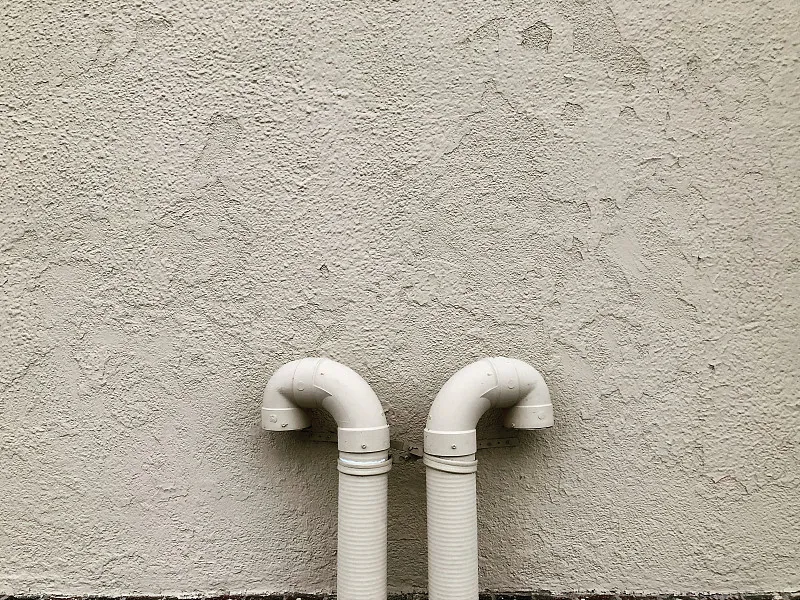Introduction
Plastics pipes fittings are essential components in plumbing and piping systems across a wide range of applications, from residential plumbing to complex industrial processes. Choosing the right type of fitting can be crucial for system efficiency and longevity, so understanding the different types of plastic pipe fittings is vital. This article will provide an overview of popular plastic pipe fittings and their unique benefits, helping you make informed decisions for your piping needs.
What Are Plastic Pipe Fittings?
Plastics Pipes Fittings are components used to connect, redirect, or control the flow of fluids in piping systems. They serve various purposes, such as allowing pipe joints, changing flow direction, or adapting pipe diameters. Plastic pipe fittings are widely used in:
- Residential Plumbing: Used for water supply lines, drainage, and waste systems.
- Commercial Applications: Found in larger-scale plumbing systems and HVAC units.
- Industrial Settings: Useful in chemical processing, wastewater management, and high-pressure applications.
Types of Plastic Pipe Fittings
Several types of Plastics Pipes Fittings are designed for specific applications. Each type varies in properties, making some more suitable for hot water systems, while others excel in chemical resistance or flexibility.
PVC (Polyvinyl Chloride) Fittings
PVC is one of the most common plastics for pipe fittings due to its affordability, versatility, and resistance to corrosion.People typically use PVC fittings in cold water systems, found in both residential and commercial settings. Key properties include:
- Durability: PVC is resistant to most acids, alkalis, and salts, making it suitable for various applications.
- Cost-Effective: It’s widely available and affordable, reducing installation costs.
- Applications: Common in irrigation systems, drainage, and wastewater management.
CPVC (Chlorinated Polyvinyl Chloride) Fittings
CPVC is similar to PVC but is chlorinated, giving it a higher tolerance to temperature, which makes it ideal for hot water systems.
- Higher Heat Resistance: CPVC can withstand temperatures up to 200°F (93°C), making it suitable for hot water supply lines.
- Durable and Reliable: More resistant to degradation at higher temperatures.
- Applications: Widely used in residential and commercial hot water lines and in some industrial processes.
PEX (Cross-linked Polyethylene) Fittings
PEX fittings offer flexibility, making them an excellent choice for both hot and cold water systems in residential and commercial buildings.
- Flexibility and Ease of Installation: PEX pipes can be bent to fit around obstacles, reducing the need for joints and making installation easier.
- Thermal Resilience: Withstands both high and low temperatures, making it ideal for hot and cold water distribution.
- Applications: Commonly used in potable water systems, radiant heating systems, and underfloor heating.
PP (Polypropylene) Fittings
PP fittings are highly resistant to chemicals, making them suitable for specialized applications where standard fittings would corrode or degrade.

- Chemical Resistance: Ideal for chemical transport and wastewater systems.
- Lightweight but Durable: Resistant to many organic solvents, acids, and alkalis.
- Applications: Widely used in laboratories, chemical processing, and wastewater management systems.
HDPE (High-Density Polyethylene) Fittings
HDPE is a high-strength plastic known for its robustness and resistance to impact, making it suitable for heavy-duty applications.
- Strength and Impact Resistance: Ideal for high-pressure and outdoor systems.
- UV Resistant: Suitable for outdoor and underground applications due to its resilience.
- Applications: Used in gas distribution, sewer mains, and industrial piping systems.
ABS (Acrylonitrile Butadiene Styrene) Fittings
ABS is another plastic material used in pipe fittings, known for its light weight and affordability.
- Impact Resistant: Suitable for applications in low-temperature environments.
- Easy to Install: ABS pipes are lightweight, which simplifies installation in construction projects.
- Applications: Commonly used in drainage, venting, and certain commercial and industrial applications.
Advantages of Using Plastic Pipe Fittings
Plastics Pipes Fittings are popular due to a range of advantages over metal alternatives:
- Corrosion Resistance: Unlike metal fittings, plastic does not corrode, making it a good choice for plumbing.
- Long Lifespan: Plastic fittings often last several decades, reducing maintenance and replacement costs.
- Cost-Effective: Plastic materials are generally cheaper than metals, reducing overall project costs.
- Lightweight: Easier to handle and install than heavier metal pipes, making them ideal for both DIY projects and large-scale installations.
- Eco-Friendly Options: Some plastic fittings, such as PPR, are recyclable, aligning with sustainable practices.
Factors to Consider When Choosing Plastic Pipe Fittings
Choosing the right plastic pipe fitting depends on several factors:
- Temperature Tolerance: Some fittings, like CPVC and PEX, handle higher temperatures than PVC.
- Pressure Rating: High-pressure systems require robust fittings such as HDPE.
- Chemical Compatibility: Chemical processing systems benefit from the high resistance of PP and HDPE fittings.
Conclusion
Plastic pipe fittings offer a versatile, cost-effective solution for piping systems in many sectors. With options ranging from durable PVC to highly flexible PEX and impact-resistant HDPE, plastic fittings meet the needs of residential, commercial, and industrial applications. Understanding these types and their specific applications allows for better, more efficient plumbing and water management solutions.
FAQs
- What is the main difference between PVC and CPVC pipe fittings?
CPVC fittings have a higher heat resistance than PVC, making them suitable for hot water applications, while PVC is primarily used for cold water systems. - Are PEX fittings suitable for both hot and cold water systems?
Yes, PEX fittings are flexible and resilient, handling both hot and cold water distribution efficiently. - Can HDPE fittings be used outdoors?
Yes, HDPE fittings are UV-resistant and suitable for outdoor applications, including underground piping. - What makes polypropylene fittings ideal for chemical applications?
Polypropylene fittings have high chemical resistance, making them suitable for transporting chemicals and in wastewater systems. - Are plastic pipe fittings environmentally friendly?
Certain plastic fittings, such as PPR, are recyclable, and many plastic fittings offer long-lasting durability, which reduces waste and aligns with sustainable practices.


















